10 Steps to Create a Winning Sales Engagement Process
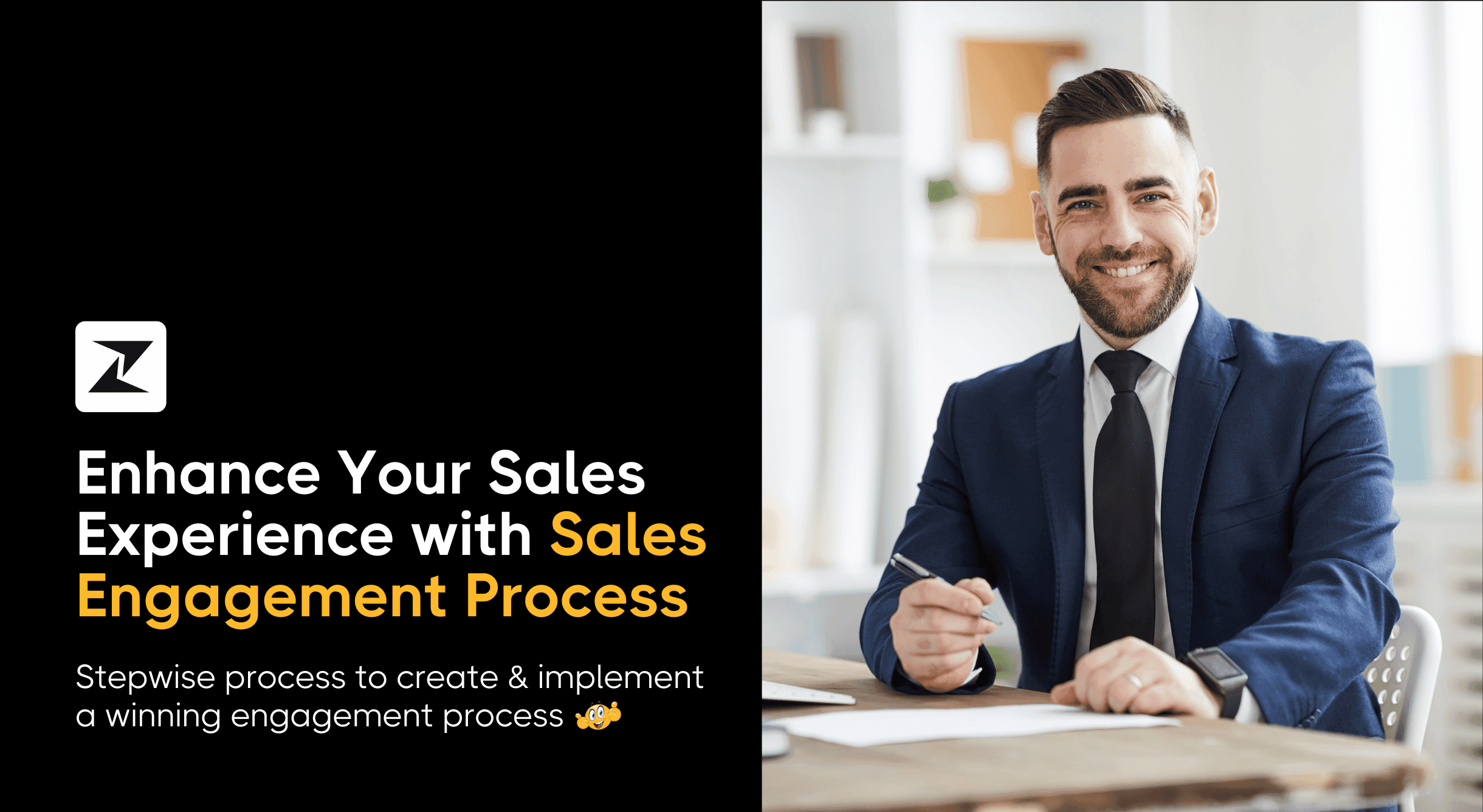
The sales engagement process is a critical element in your sales pipeline. Do you remember the last time you came in contact with a company that impressed you with its sales engagement?
It feels great to be heard and have your needs addressed on a priority basis and if you are also running a business, that’s the aspect you should strive to perfect.
In today’s world, the internet and the popularity of AI have increased the demands of customers sharply.
With a wide array of resources available on the internet, buyers spend a considerable amount of time researching how to solve their pain points. So, it's no secret that you can convert engaged leads more easily into paying customers.
But, to engage customers, you need to have a well-thought-out engagement process and a dedicated team to follow it. And, frankly, that's easier said than done!
Fortunately, sales engagement tools can help you streamline and improve your sales engagement process. But before I share the tactics to improve your sales engagement process, let's first understand the basics of sales engagement.
What is sales engagement?
Imagine a situation where your business is unable to meet the production quota. You research and find out that you’re lacking equipment and automation capabilities that are stopping you from hitting your goals.
You reached out to a vendor and they took care of all of your problems, starting from understanding your needs to suggesting suitable solutions.
Throughout the entire process, they stayed in touch with you and resolved all of your questions until you were ready to invest in their suggested solutions. And this is what sales engagement is all about.
Sales engagement is a process that involves direct or indirect communication between sales representatives and leads with the aim of closing a deal successfully.
The correct sales engagement process will help your sales representatives become more efficient and productive, dedicating more time to revenue-generating tasks.
In fact, sales engagement involves using the right tools, setting up email sequences, sending reminders, and automating sales workflows.
With a sales engagement platform, your sales representatives can easily automate multiple workflows and leverage readymade templates to send out personalized communication messages.
What is a sales engagement model?
“It’s no longer about interrupting, pitching, and closing. It is about listening, diagnosing, and prescribing.” – Mark Roberge
The sales engagement model is a collection of processes, strategies, and communication methods between your sales representatives and qualifying leads.
This approach helps you establish a strong, long-lasting professional relationship with your audience.
Although preparing a sales engagement model isn't a single-day job, it's worth the investment to strategize your sales engagement.
The correct sales engagement model will improve your brand awareness, shorten the overall sales cycle, enhance team performance, and greatly increase customer retention and sales.
But, there is no one-size-fits-all approach to sales engagement. So, you need to create your own sales engagement model that fits your business needs and allows you to deliver quality customer satisfaction.
But there are certain standard rules and strategies that you can follow and mold to suit your business requirements.
Improve your Sales Engagement Process
Get powerful solutions from Zixflow to boost engagement throughout the sales funnel
Book a DemoHow to create and implement a stellar sales engagement process?
An optimized sales engagement process can assist you in enhancing the sales experience your sales team delivers to your customers.
Analyze and audit your existing sales engagement process
The first step of improvement is understanding what is working and what isn't.
One of the ideal ways to analyze the effectiveness of your existing sales engagement process is to understand how your sales representatives function.
Retrace back the steps and examine the last 5 or 10 close deals. What were the different elements involved from beginning to end? Which touchpoints influence the leads to convert into a customer?
Also, consider what was the duration of the entire process and between every step. The more information you have, the better your sales engagement strategies will be in the future.
With a sales engagement platform like Zixflow, you can get a comprehensive timeline review highlighting every interaction you had with your leads. Now just that. You can also add notes, and activities, or subscribe the lead to a cadence directly from the contact overview screen.
Here are a few sales-qualifying questions you can include during the auditing process:
- Who is your ideal buyer?
- What is the first interaction, and through which medium?
- What is the average sales engagement process?
- What are the top-performing touchpoints?
- How many times does a sales rep follow up with a prospect?
- What is the average time for deal closure?
- What are the common objections faced by inside sales reps?
- How is a deal won?
- What are the common causes of losing a deal?
Outline the buyer journey
Did you know that 84% of B2B decision-makers start their buying process with a referral? Segment your sales engagement process and map out the buyer journey.
Here are the different stages involved in this process:
Consideration
This is the first stage where your prospects are considering a product or service. During this phase, your competition is high because your prospects are evaluating the best possible solution to their pain point.
A common example of this stage is thinking of purchasing a mobile phone. You acknowledge the need that you need a new phone and you search for brands or models available in the market that match your preferences.
Evaluation
In the evaluation phase, your prospects have completed the preliminary research. They now have a general awareness of the options available to them. In this stage, they typically shortlist a few businesses that seem most appealing to them.
Continuing the previous example, after researching the different mobile brands, you dig deeper and look at the specs of the phones you have shortlisted. Here, your objective is to identify a phone that fulfills your needs perfectly.
Selection
In the third stage, your prospects become more confident about their purchase decision and try to select the best option among the various ones available to you.
After comparing various models, you finally have selected one or two that fit your needs. It is now the time to act on the decision you made and this leads us to the final stage of the buyer’s journey, Closure.
Closure
This is the final and the most important phase where prospects will now become your customers. You will need to provide excellent customer engagement to boost sales till now and assure them of similar post-sale support to finalize the deal.
If you win the deal, your post-sale engagement will convert them into loyal customers and brand advocates.
Your sales engagement activities should align with the buyer's journey. For example, in the consideration stage, your prospect might research your organization's credibility.
So, selecting the best medium and content to spread awareness about your product and brand is the best possible sales engagement approach.
Determine the action that moves your prospect to the next phase
You need to determine which sales engagement activities influence prospects to advance from one stage to another.
To determine the action, you can consider the following questions:
- While conducting warm lead engagement, did a rep strike on a certain pain point that influenced or motivated the prospect to schedule a call?
- During the demo, which points helped the prospect to move forward, or what objections stalled the deal?
- After delivering the sales pitch, did the prospect immediately give a positive answer? If so, consider carefully why and how that happened. What strategies did your sales rep use to craft the sales pitch?
Create relevant content
Developing relevant types of content to engage your leads can immensely improve brand perception and translate into more conversions.
Delivering personalized and customized engagement messages can help you connect with leads on a deeper level.
For example, you're selling fitness bands. In the consideration phase, you can share informative content such as ‘Top healthcare habits to incorporate in your lifestyle’ or ‘How fitness bands can complement your new fitness regime?
Informative content sharing relevant awareness of your brand acts as a thought leader in the market. Consequently, customers will be more likely to trust your brand over your competitors.
Similarly, in the evaluation phase, you can share more product-centric content, such as case studies, brochures, or ebooks about your product. This will make the subject simple to understand.
Align with marketing
Your marketing strategy has a huge role to play in the sales engagement process. Most leads move into the sales funnel after interacting with the marketing content.
Businesses with firmly oriented sales, marketing, and customer success teams achieve their three-year profit growth 27% quicker. So, your sales engagement process must align with your marketing team.
The simplest approach to do this is by setting up recurring meetings and sprints with your marketing and sales team to ensure consistent collaboration.
Take note of your upcoming content strategy and editorial calendar. This will ensure your sales teams can make the most of this content when it launches.
Personalize your messaging
While automation provides a huge boost to your sales engagement, it should be used rationally. In the current scenario, the customer expects personalized content and insightful information.
So, your sales engagement activities should incorporate personalization. One of the best ways to ensure integration personalization in sales engagement is to utilize AI to create personalized email templates.
These templates allow you to tailor your messaging based on prospects’ preferences, and you don’t have to spend time thinking about what to include in your email. With Zixflow, you can quickly generate tailored messaging copy in just a few clicks.
The AI Wizard lets you create email content for any type of email for sales engagement, target audience, industry, and product. Just provide it with basic information, and it will give you a solid email copy you can readily use or save for future prospects.
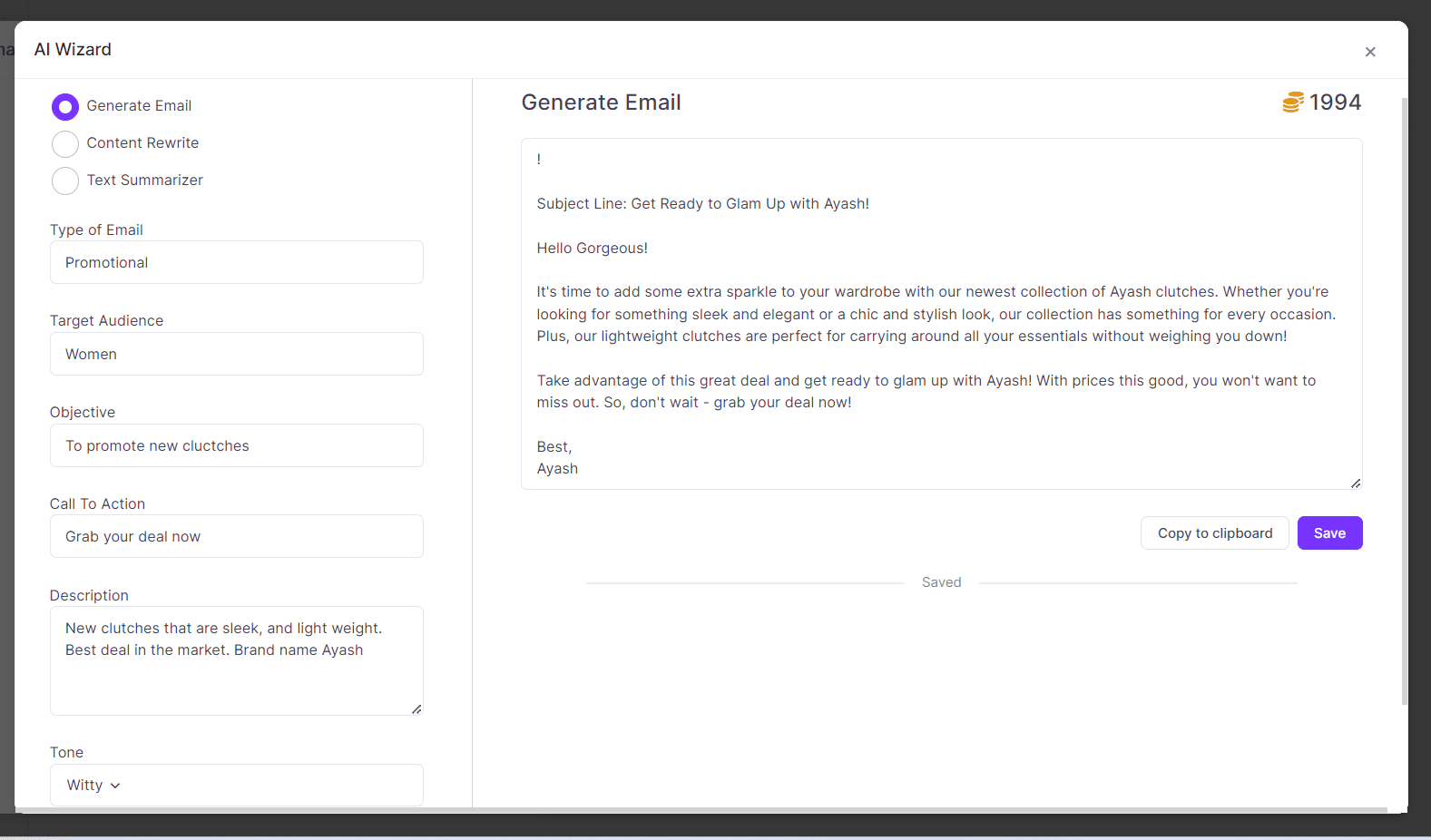
Get creative
A healthy dose of creativity never disappoints your prospects. Hyper-personal outreach combined with intelligent creativity mesmerizes your lead and results in a successful closure.
Creative touches don't need to be entirely product-centric – a fun reference to recent events, pop culture moments, or something the prospect shared on LinkedIn can also be an effective engagement plan.
Develop an automated sales engagement cadence
Once you have identified how and when to engage with your prospects, establishing an automated sales cadence can streamline and speed up your sales cycle.
With sales engagement platforms, you can quickly create an outbound sales cadence using predefined templates. For instance, a sales cadence in sales engagement platforms is a scalable and customizable option to automate your messaging.
You can send automated messages to your customers, establish several touchpoints or engagement activities in any order you desire, and engage with them on the channel of their preference.

Measure results
Launching your sales engagement strategy isn't the end of your sales engagement process. You need to consistently monitor your process and optimize it for consistent, fruitful outcomes.
Once your reps start following the defined sequences and leverage the required platform for the engagement process, it's time to shift from "implement" to "optimize."
Good sales engagement platforms such as Zixflow come with integrated data dashboards and analytics to help you understand the health of your sales engagement campaigns.
This will help you determine the impact of your sales engagement strategies, identify opportunities to address inefficiencies, and improve your sales performance.

Invest in the right technology
The right tools always make your sales engagement process seamless and easier, not just for you but for your sales team as well.
Select a sales engagement platform that offers a lot of integration options and allows you to integrate it easily with your existing tools.
It should also provide complete visibility of the sales engagement process, letting you streamline your communication, and has a user-friendly interface to flatten the learning curve.
With Zixflow you can quickly develop, optimize, and analyze your sales engagement process. It is an all-in-one platform built to meet every one of your business’s needs and optimize your efficiency.
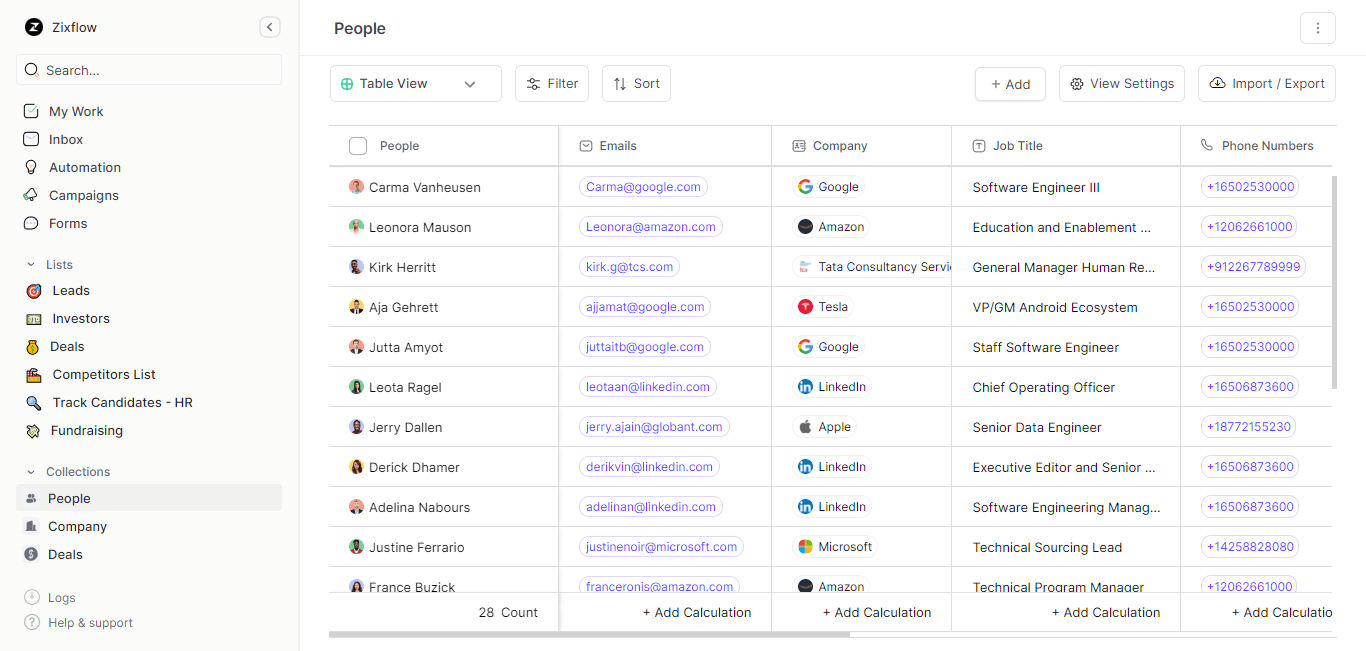
How to automate the sales engagement process?
A significant portion of the sales engagement process is repetitive and monotonous.
Each phase of sales engagement involves certain activities that can be easily automated, such as prospecting leads, sharing cold emails, follow-up messages, and tracking engagement metrics.
Once a lead is converted into a customer, the sales engagement activities again follow the same routine. The best way to tackle this is to automate your sales processes by using a sales engagement platform.
Below are some of the tasks you can automate to lower the burden on your sales team;
Automate prospecting
Whether you're a startup or an established business with a huge volume of leads pouring in regularly, collecting the leads with their relevant information in a single place to begin the sales engagement process is a lengthy affair.
But sales engagement tools can do that for you easily. For example, Zixflow Forms collects and adds leads within the system without needing any interaction from your side.
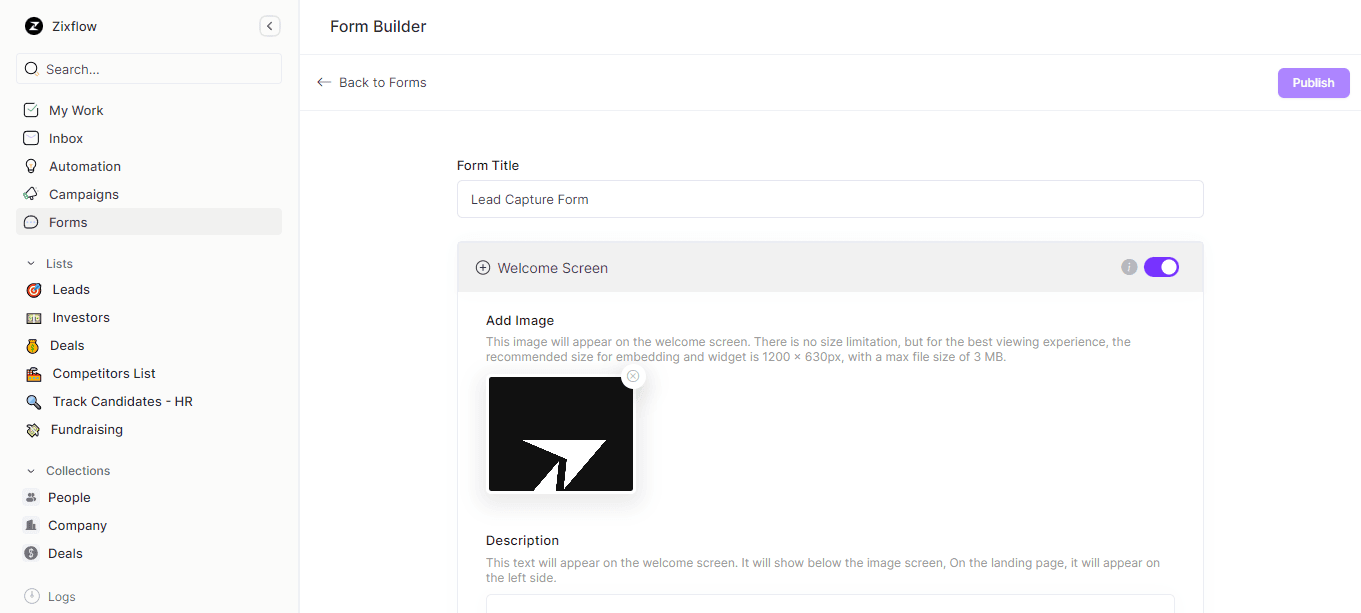
Automate daily outreach and follow-up
Average representatives spent 28% of their workweek handling emails.
However, saving that time can lead to greater innovation and better efficiency while interacting with customers. Using a predefined template and automation can eliminate similar typing emails repeatedly and also ensures personalization.
With the AI Wizard of Zixflow, paired with the cadences, you can quickly generate email content be it transactional or informational, and send these emails automatically to your leads so your sales reps do not have to waste their work hours for the same.
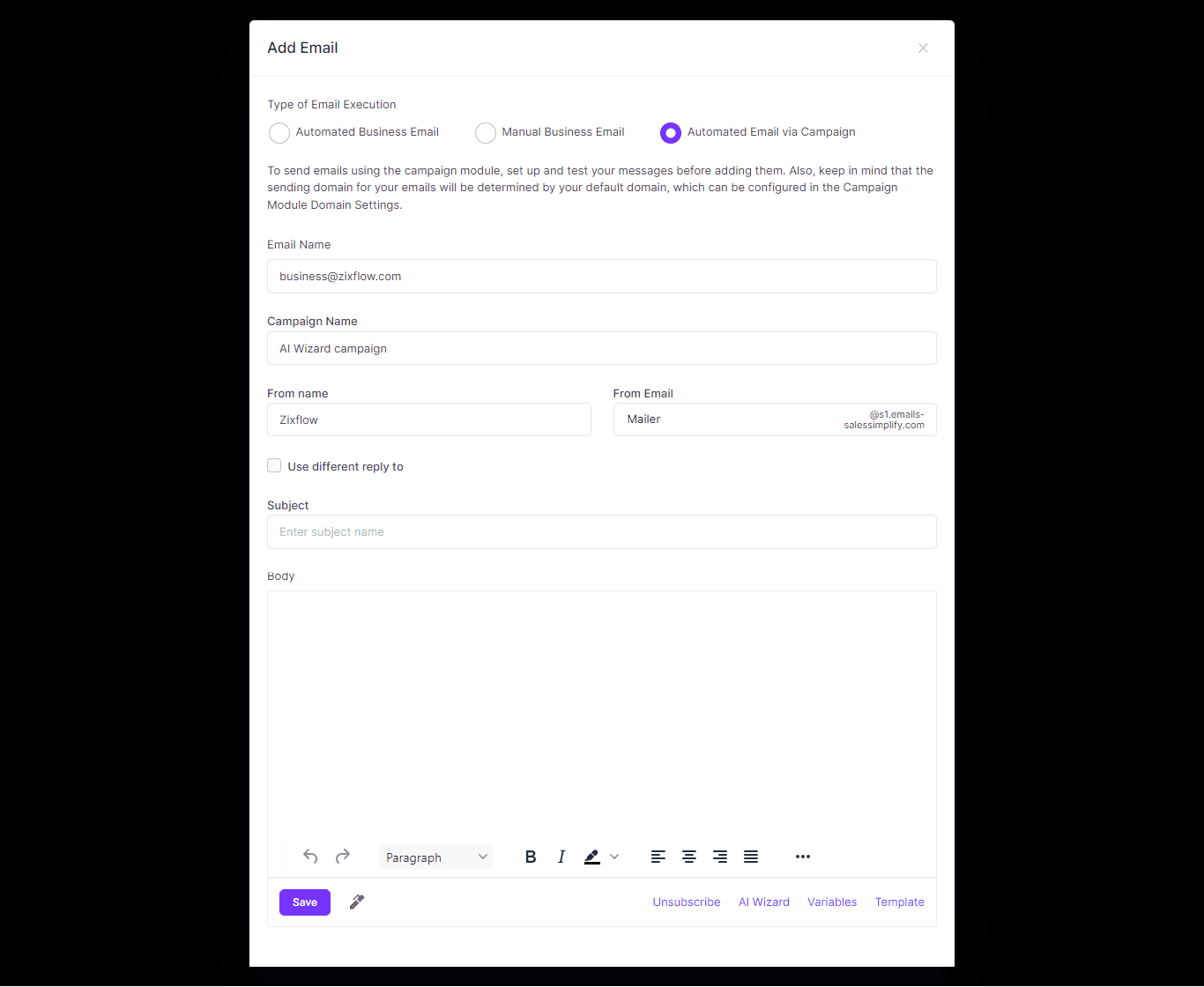
Level your Sales Engagement Process
Get started with the Zixflow platform for free today!
Contact SalesAutomate performance tracking
Generating performance reports manually can be an integrated and time-consuming task. Instead, with customized dashboards, you can get a systemic visual representation of the key parameters on a weekly, monthly, quarterly, and yearly basis.
Automate daily workflow
The sales engagement process encompasses several repetitive activities. Activities, including follow-up engagement, welcome message, invoice generation, demo scheduling message, and report generation, can be easily automated.
Automating sales engagement processes for each stage of the sales pipeline as much as you can will save both time and money.
Zixflow also comes with sales automation capabilities that let you set up automated sales operations to simplify your sales process. You can create automation workflows with Zixflow where a certain action is triggered if a condition is met.
This allows you to automate responses and let the software handle the basic communication or lead management so you don’t have to do it manually.
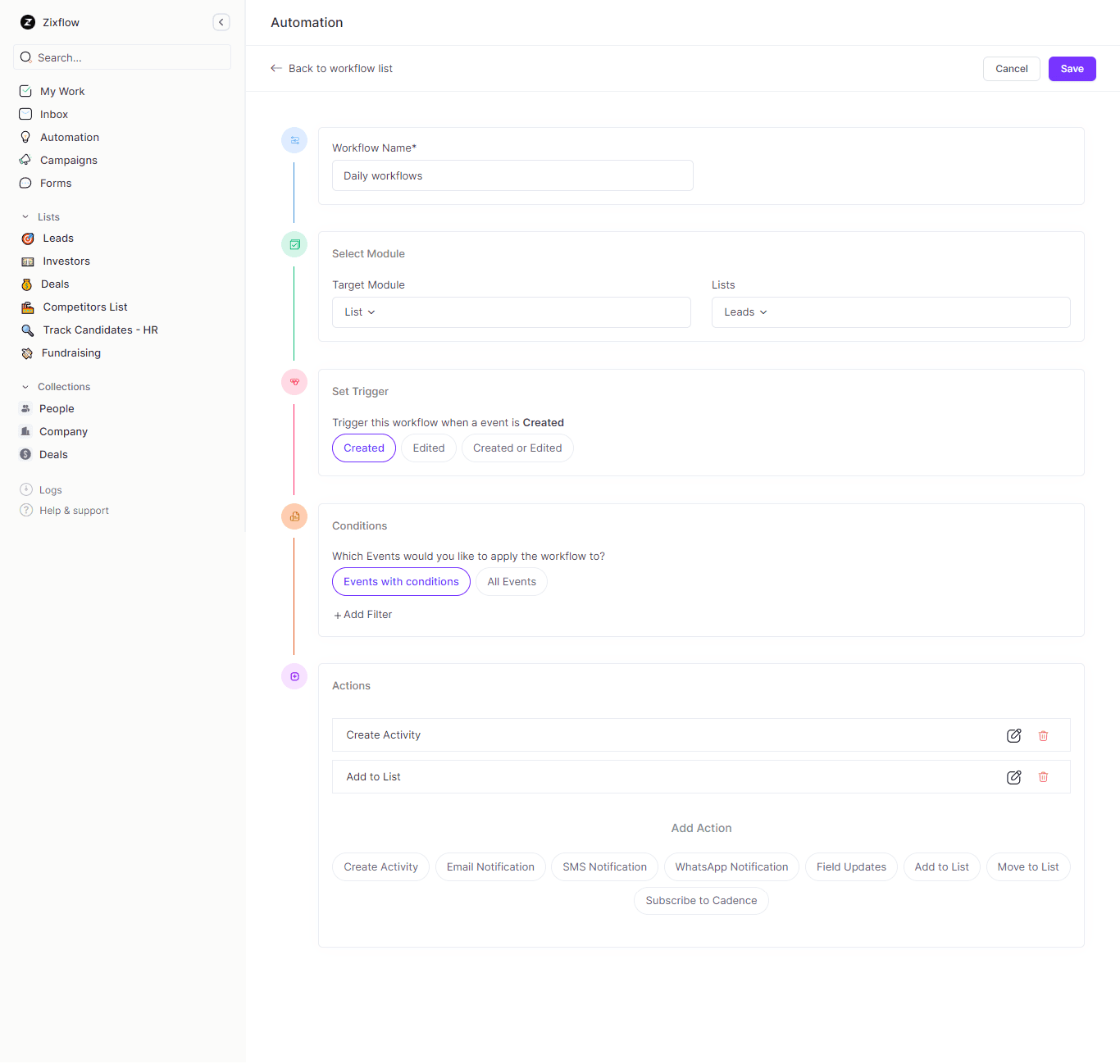
Common engagement mistakes you should avoid
The sales engagement process is a slippery slope, and there are mistakes that you should certainly avoid, such as:
- Forgetting that the sales process is a consistent work in progress
- Not documenting your engagement experiments and learnings
- Concentrating on one bigger end goal and ignoring the micro-objectives
- Leaving sales process steps open to interpretation
- Expecting one sales engagement technique is the solution for a lifetime.
- Leaving marketing out of the loop
- Centering the process of closing deals and forgetting and ignoring other elements, such as causes of deal loss.
- Forgetting to measure KPIs
Ready to create a sales engagement process that converts?
Knowing how to create and implement the sales engagement process isn't always intuitive. Businesses should be willing to proactively explore solutions that will enable them to solve core sales engagement challenges. This can be done by learning about various sales engagement strategies, participating in webinars, listening to sales engagement podcasts for insights, or choosing the right sales engagement platform.
Zixflow is making sales engagement better for many businesses through its extensive suite of tools for managing sales pipeline. The platform aims to eliminate and streamline many of the sales engagement process bottlenecks that bog down the sales process.
Your reps can dedicate more time working with prospects and less time to repetitive administrative tasks and CRM issues.
Create a no-cost account and try it for yourself to understand how a better sales engagement process leads to better customers!
